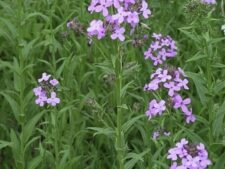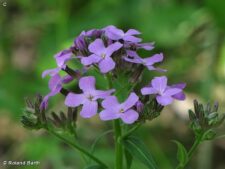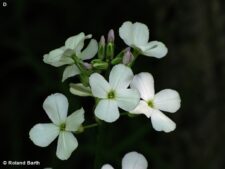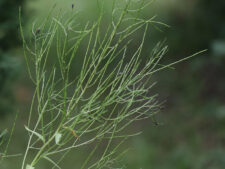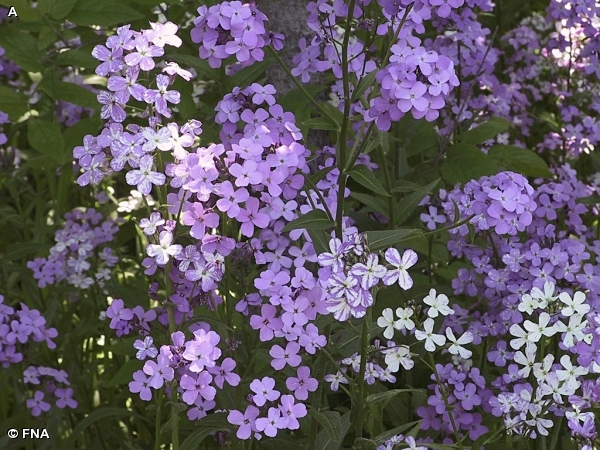
This naturalized biennial (or perennial) is an introduced European garden plant. A basal rosette of leaves forms the first year followed the second year by an erect plant up to 4 feet tall. Alternate, lance-shaped leaves have finely toothed margins (B). The fragrant flowers about 3/4 inches across are bluish, purple or white with 4 petals (C,D) arranged in showy terminal clusters (A). Flowers are replaced by long, narrow pods (siliques) containing many small flat seeds (E).
Dame’s Rocket, a plant popular in Europe since Roman times for its showy flowers and sweet fragrance, was introduced into North America as a garden ornamental. It has since been planted widely in gardens and along roadsides, often escaping into adjacent sites. Such is the case at Fontenelle Forest and Neale Woods where it occurs in areas of disturbance and is spreading in sections of adjacent woodlands at both sites. Dame’s Rocket appears to have arrived in Fontenelle Forest sometime after 1959 as the Botany Club book does not mention it. Marjorie Garabrandt’s list of nature center plants indicated it was common in portions of FF, but makes no mention of its presence at NW suggesting its arrival there occured after 1988.
Identified by its 4-petaled bluish-purple or white flowers and alternate leaf pattern. Our three phlox species, Timber Phlox (Phlox divaricata), Fall Phlox (Phlox paniculata) and Prairie Phlox (Phlox pilosa) have similar looking flowers, but they all have 5 petals and opposite leaves.
The sweet fragrance of these flowers is most pronounced at the end of each day. This characteristic is likely responsible for the genus name Hesperis, derived from the Greek word for evening.
The content of NatureSearch is provided by dedicated volunteer Naturalists of Fontenelle Forest who strive to provide the most accurate information available. Contributors of the images retain their copyrights. The point of contact for this page is: Roland Barth.

 Identification
Identification